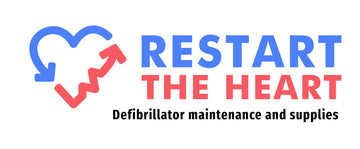Everything You Need to Know About Defibrillator Voltage
Sudden cardiac arrest (SCA) is a leading cause of death in Australia, with around 3,000 people dying from the condition each year. Although SCA can affect people of any age, it is most common in those over 65.
SCA is a condition in which the heart stops beating unexpectedly. When this happens, blood stops flowing to the brain and other vital organs. SCA is a medical emergency. If not treated immediately, it can lead to death.
There are many different causes of SCA, but the most common is an abnormal heart rhythm known as ventricular fibrillation (VF). This is where the heart's normal electrical activity is disrupted, causing the heart to beat erratically and very quickly. If not treated immediately, VF can lead to cardiac arrest and death.
When someone suffers a sudden cardiac arrest (SCA), it is crucial to call 000 and start CPR immediately.
If a defibrillator is available, it should be used as soon as possible. The defibrillator will give the person a shock that will restart their heart. It can double or triple a person's chance of survival from SCA.
What Is a Defibrillator
A defibrillator is a device that gives a high-energy electric shock to the heart through the chest wall to try to restore a normal heart rhythm. This high-energy shock is called defibrillation, an essential life-saving intervention for certain types of cardiac arrest, such as SCA.
Defibrillators are an essential part of the emergency medical system. They are used in hospitals, ambulances, and public places such as airports and office buildings. Defibrillators are also available for home use.
How Does a Defibrillator Work
Defibrillators come in a variety of shapes and sizes, but all work in essentially the same way. They deliver an electric shock to the heart through paddles or patches that are placed on the chest. The shock stops the heart’s abnormal electrical activity and allows the heart to re-establish a normal rhythm.
If you are ever in a situation where someone needs defibrillation, it is important to remember that time is of the essence. The sooner a shock is delivered, the greater the chance of restoring a normal heart rhythm and saving a life.
Why Keep an Eye on Defibrillator Voltage
When it comes to defibrillators, voltage is everything. A defibrillator's voltage is what gives it the power to restart a heart. If the voltage in your defibrillator drops below a certain level, it may not be able to restart a heart. That's why it's so important to monitor your defibrillator voltage and make sure it stays above the minimum level.
There are a few different ways to monitor your defibrillator voltage. One way is to use a voltmeter. A voltmeter is a device that measures voltage. You can use a voltmeter to measure the voltage in your defibrillator and make sure it is above the minimum level.
Another way to monitor your defibrillator voltage is to use a monitoring system. A monitoring system is a device connected to your defibrillator and monitors the voltage. If the voltage in your defibrillator drops below the minimum level, the monitoring system will notify you.
Monitoring your defibrillator voltage is crucial because it could mean the difference between life and death. By monitoring your defibrillator voltage, you can get the treatment you need to prevent sudden cardiac death.
There are a few reasons why the voltage in a defibrillator may drop. One reason is if the battery is getting low. If the battery is running low on power, it won't be able to deliver as much voltage as it needs to. Another reason is if the defibrillator is old. Over time, the components in a defibrillator can break down, and this can cause the voltage to drop.
If you think the voltage in your defibrillator may be low, it's essential to get it checked by a qualified technician. They will be able to test the voltage and make sure it's at the correct level. If it's not, they can make the necessary repairs or replacements.
Conclusion
A defibrillator is a life-saving device that can restart a person's heart in the event of a sudden cardiac arrest. However, for a defibrillator to work properly, it must be adequately maintained and supplied with the necessary supplies.
At Restart the Heart, we have a wide range of defibrillator supplies, including batteries, electrodes, and pads. We also offer a variety of services, such as maintenance and repair, to keep your defibrillator in top condition. Let us make sure that your defibrillator is running efficiently. Browse through our supplies today!

